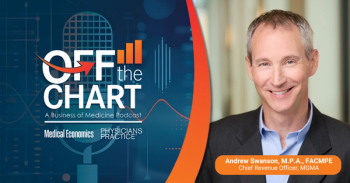
Hybrid Concierge Model Uses Best of ACOs, Medical Homes
Looking to mix the best of the ACO and medical home practice models? Look no further than a hybrid concierge model.
Two models have come to the forefront of medical delivery - “medical homes” and accountable care organizations (ACOs). The two models have different focuses that, at first, make them appear unable to coexist within a practice. The medical home is all about the doctor and practice handling more of the soft services that have been fading from many primary-care practices - things like TLC, advocacy, advising, coaching, managing, and coordinating care.
While doctors are often excellent in these roles and want to deliver those services, they generally are not paid to do so by third-party payers. On the other hand, ACOs are focused on cost efficient delivery of services. While ACOs speak of high quality, that is not their main purpose.
When I first examined the medical home concept, I thought it was a great way for physician advocacy groups to lobby for more compensation based on a higher level of care and service. It was another way to make the case for appropriate compensation for those services which were not exactly based on a diagnosis and a visit. I never thought of it as a cost effective way to deliver care, but rather the right way to deliver care.
ACOs,
So, can the two models exist together? Is the medical home, or a portion of those services, cost effective in an ACO model? If you narrow down the medical home to just coordinating care (as we see in most medical home programs today), then it may control costs by making sure that people go where physicians want them to go and for how much time and service. That certainly could be cost effective in an ACO. However, a true medical home approach goes much further than that. The true medical home model can prove to be cost effective, but only downstream, far removed from the immediate measure of cost effectiveness.
Here is where the hybrid concierge model can step in to effectively mix the best of the two models. The benefits in a hybrid program closely resemble those of the medical home; however, it is funded directly by the patient. It is voluntary, not universal, and does not negatively affect the cost analysis of an ACO. In fact, it may actually help to reduce costs.
For example, concerns about over-testing and over-utilization by members of a concierge program versus traditional patients are unfounded. It is my experience that referrals are actually greater in a traditional practice than in a concierge environment, where the primary physician is paid to offer more of the services that they are comfortable and trained to perform. In addition, physicians who really know their patients can reduce emergency room visits and lengthy hospital stays.
So what about the concerns regarding fairness and the economic barrier to getting concierge services? What about those who need it but cannot afford it? There are many physicians who “comp” patients who they feel should get the service, even in a hybrid environment. Also, there are no restrictions regarding who can pay for the program for participants. Sometimes family members, a charity, a not-for profit, a hospital system, a medical group itself, a corporate benefit, an insurance benefit, or even a social program pays for memberships.
My conclusion is that to properly establish a medical home, it takes significant involvement by the physician, not just the staff, and that the cost of performing the services may not be recaptured under the current cost constraints of care. The cost should be volitional and paid for separately as in the hybrid concierge program. It is there that the true value of the medical home model can be realized.
Newsletter
Optimize your practice with the Physicians Practice newsletter, offering management pearls, leadership tips, and business strategies tailored for practice administrators and physicians of any specialty.














